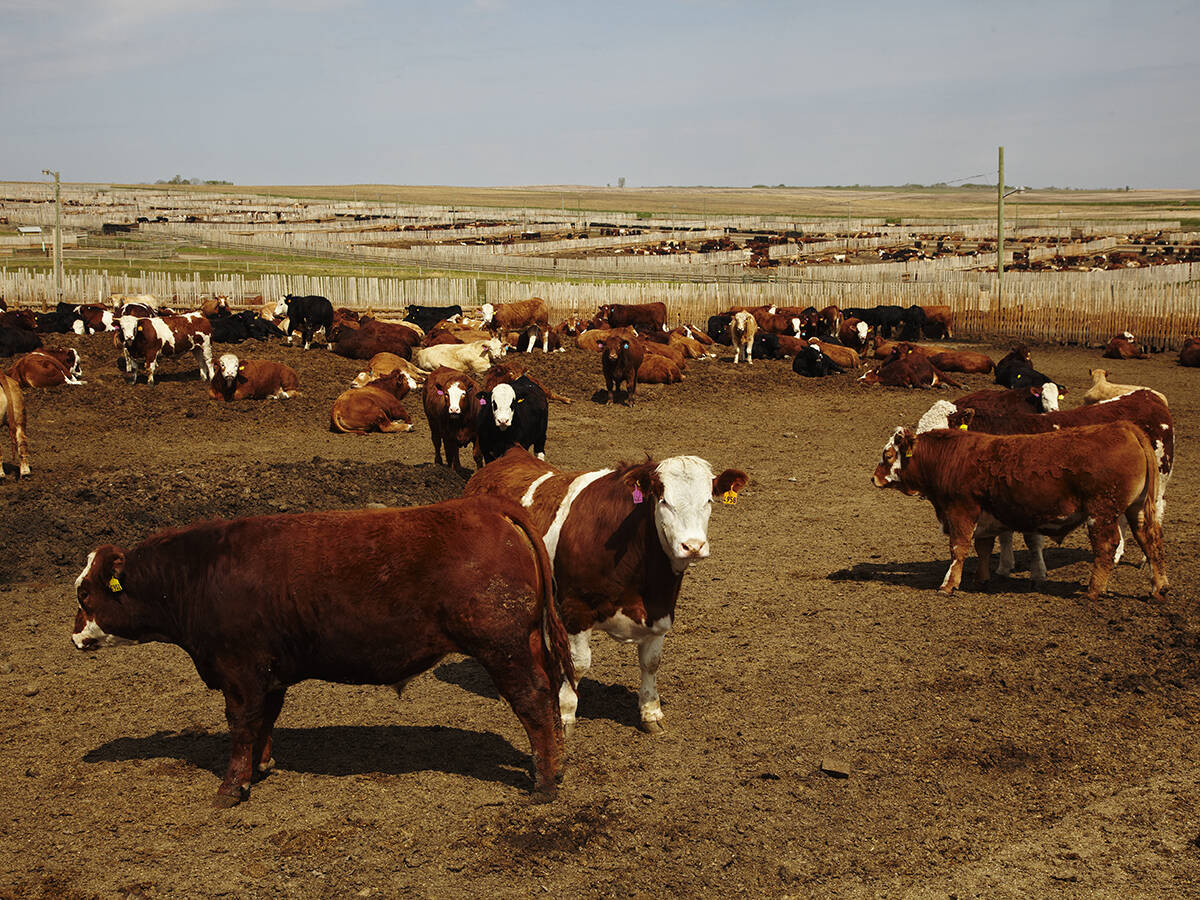This cattle market information is selected from the weekly report from Canfax, a division of the Canadian Cattlemen’s Association. More market information, analysis and statistics are available by becoming a Canfax subscriber by calling 403-275-5110 or at www.canfax.ca.
Alberta fed cattle prices moved up again as February drew to a close. Heifers were up $2.37 per hundredweight while steers rose 89 cents.
Canadian fed beef production was record large for the first two weeks of February, but the price breakdown for Western Canada versus Eastern Canada is quite different.
Read Also

Canfax cattle market report – November 13, 2025
The Canfax cattle market report for November 13, 2025. Fed & feeder cattle prices, butcher cow trends, and cutout market insights.
Year-to-date western fed production is two percent higher than last year, while prices are six percent higher than last year, on average.
In the East, fed prices are down four percent and prices are up 23 percent.
Western prices have strengthened for the last three straight weeks, gaining $5 per cwt.
Feedlot losses remain historically large, however. Yearling steers and heifers placed in feedlots in September sold in February for an average negative margin of $338 per head.
Dressed sales as of Feb. 25 ranged from $272-$275 per cwt. delivered, and most cattle traded were scheduled for March 28 delivery.
The Alberta fed cash-to-futures basis was reported at -$20.01 per cwt. This is the fifth weakest in 35 years, after 2004, 2014, 2016 and 2019.
Ontario dressed sales came in at $290 per cwt. delivered, steady on the previous week.
In the United States, Iowa and Nebraska dressed sales ranged from $226-$229 per cwt., up $2-$3 per cwt. from the previous week. Live sales were $142-$144 per cwt., which is steady to $1 higher. Sales in Texas and Kansas were just slightly lower at $141-$142 per cwt.
Pork cut-out values have rallied since the start of the year by $28 per cwt., putting the Choice beef-pork cut-out ratio at 2.25, which is the narrowest for this time of year since 2017. This suggests beef is competitive at wholesale and should feature through spring. Another factor to watch is highly pathogenic avian influenza spreading through parts of the U.S. and affecting commercial poultry producers.
Only a light offering of non-fed cattle were reported for the week ending Feb. 25. Prices rallied to the highest levels seen since July 2021. Slaughter cows traded $4 per cwt. higher than the previous week. D2 cow prices set a new annual high, averaging $87.50 per cwt. Dressed cow bids surged $5 per cwt. higher to $170-$175 per cwt. delivered. Butcher bulls strengthened $3.64 per cwt. higher to average $110.36.
Feeder and stocker prices also gained seasonal momentum with an overall steady to stronger market tone.
Interest was mixed for light calves less than 400 pounds. Steers were $5.28 per cwt. higher while heifers eased $3.75 lower. Middleweight steers saw strong demand, and prices firmed $2.50-$3 per cwt. higher. Heifers were modestly up.
Backgrounders showed keen interest in larger 700-800 lb. calves, opting to buy weight rather than feed due to high feeding costs. Softening feedgrain prices did improve cost of gain.
Larger feeders heavier than 800 lb. traded steady to stronger on tighter supply. Auction volumes continue to decline seasonally, down nine percent from the previous week and 37 percent lower than the same week last year.
Bred cows ranged $1,175-$2,050, and bred heifers traded from $1,575-$2,200.
In beef trade, cut-out values realigned more than $10 per cwt. lower last week on seasonally lacklustre demand and wholesale price resistance.
Choice cut-out values came in at $259.24, while Select was $254.55 per cwt.
The Choice-Select spread was very narrow, and analysts expect that to widen as seasonal demand builds for Choice.
Total U.S. meat production is forecast to decline this year, following a drop in 2021. However, at 100.2 billion lb., it would still be the second largest ever.














